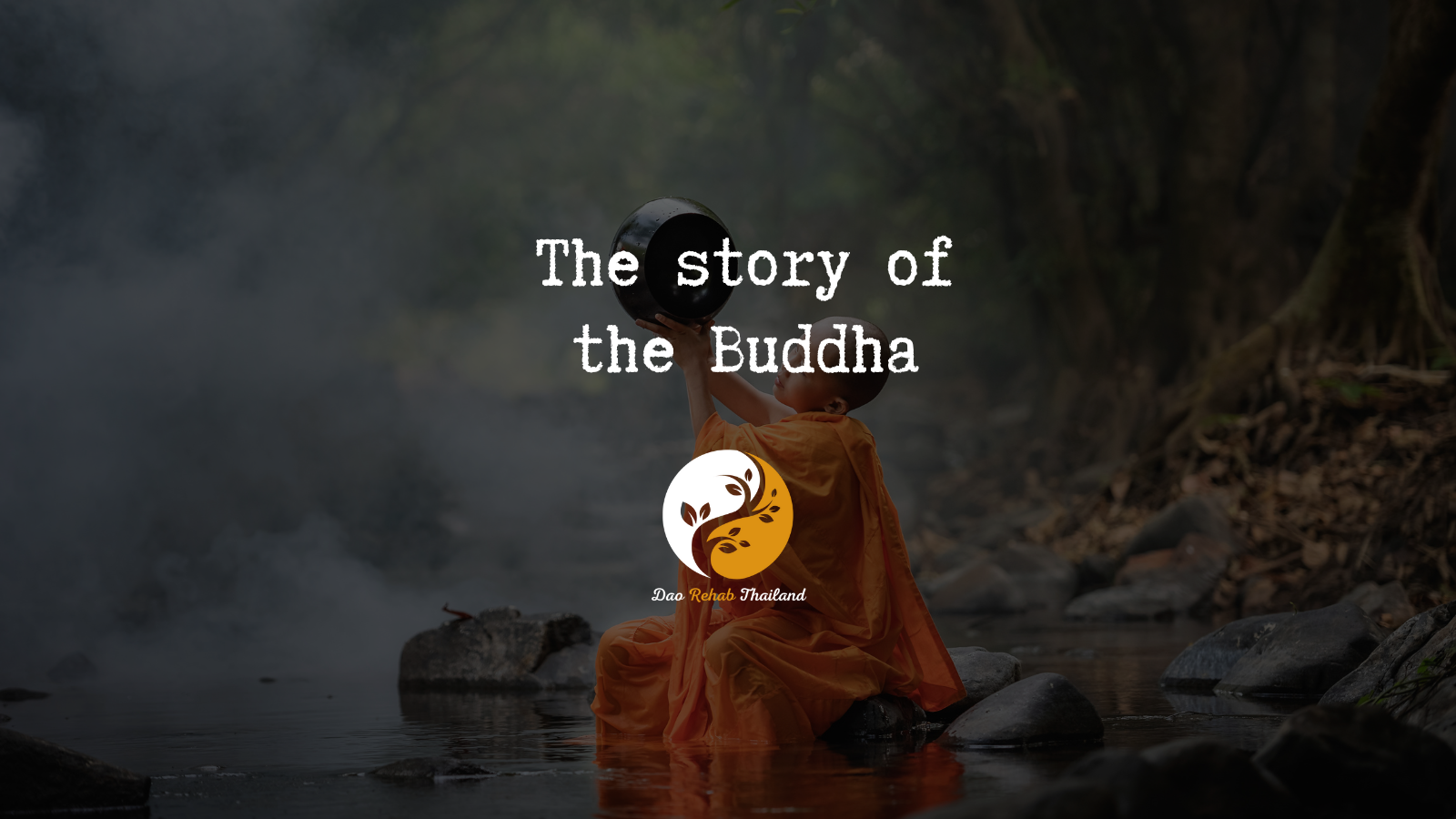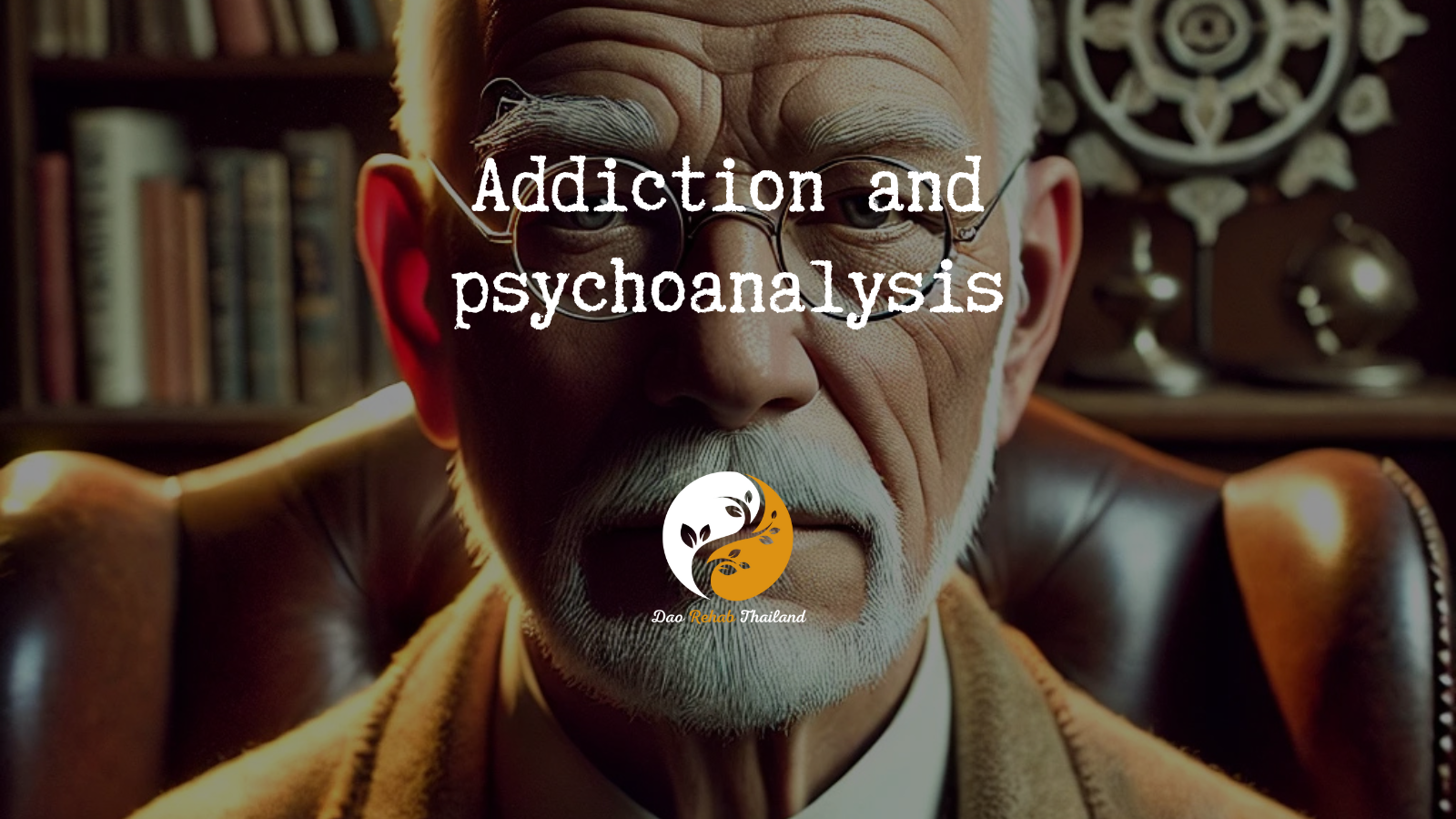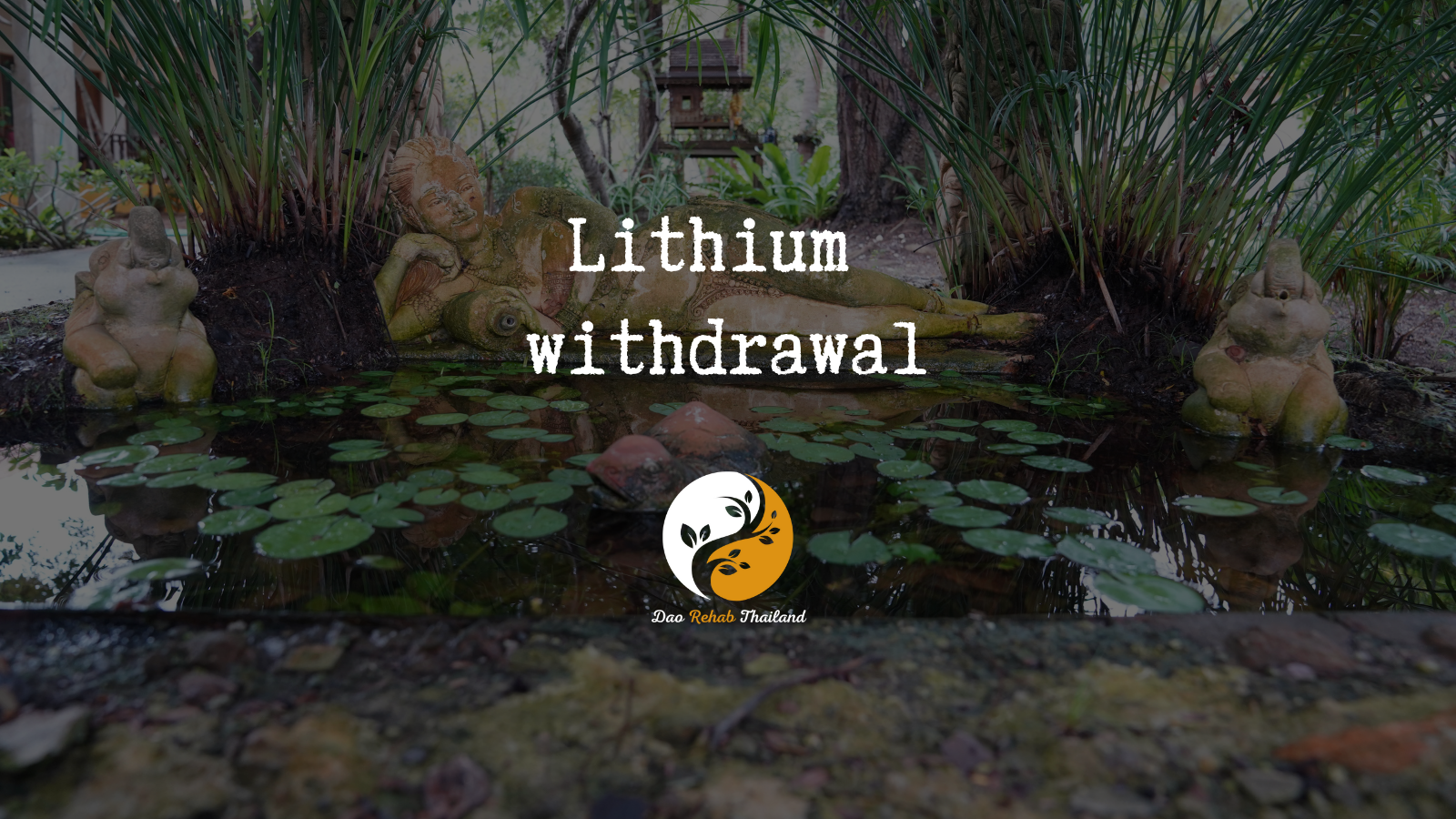
The story of the Buddha
The story of the Buddha
“Turning the impossible into possible”

"Detox from Drugs at a Luxury Holistic Center in Thailand and Israel"

The Buddha lived 2,500 years ago.
The Buddha is an Indian sage who influenced one of the most renowned and significant religions, Buddhism—the largest religion in the world. He lived 2,500 years ago, and his way of life and ideas are still studied and have an impact on human nature today.
Five hundred years before the birth of Jesus, Siddhartha Gautama was born, known to us today as the Buddha. He was born on the border between India and Nepal, which has become one of the holiest places in the world and a pilgrimage site for his followers. The Buddha grew up in a city that has long since disappeared.
"Holistic Center for Trauma, Addiction, and Mental Imbalance Treatment in Thailand"
“Come to the beginning of your journey to freedom from addiction to alcohol, drugs, and pills, and rediscover your life within the serene embrace of DaoTherapy Rehab in Thailand—where holistic healing meets empowering recovery.”
DaoTherapy Holistic Rehab
Key Elements of OxyContin Detox:
Medical Supervision: OxyContin detox must be conducted under medical supervision, as the body may experience withdrawal symptoms. These can include nausea, anxiety, muscle aches, and insomnia. A medical team will monitor and manage these symptoms to ensure the patient’s safety and comfort.
Holistic Therapies:
Holistic Therapies: Many detox programs incorporate holistic therapies such as mindfulness, yoga, and meditation to help individuals cope with stress and anxiety during the detox process. These therapies support the mind-body connection and contribute to overall recovery.
Tapering Process
Tapering Process: OxyContin detox often involves a gradual tapering of the drug to reduce withdrawal severity. Doctors will slowly decrease the dosage over time to allow the body to adjust to lower levels of the substance.
Psychological Support:
Psychological Support: Like any addiction recovery process, detox from OxyContin includes psychological support. This can involve counseling, therapy, or support groups to address the mental and emotional aspects of addiction.
Post-Detox Treatment:
Post-Detox Treatment: After completing detox, continuing treatment is crucial to prevent relapse. This often includes participation in ongoing therapy, group support, and the development of new coping strategies to maintain sobriety.
The Buddha himself was the son of a king who abandoned a life of pleasures.
The Buddha himself was the son of a king who abandoned a life of pleasures to seek spiritual enlightenment, which he found through hard work and a different way of life.
It is said that before he was born, his mother had a dream in which she saw a beautiful white elephant offering her a lotus flower and then entering her body. When the wise men of that time were asked to interpret the dream, they said it foretold that she would bear a child who would become either a great spiritual leader or a powerful ruler, someone who would either conquer the world or become an enlightened figure.
Apparently, the dream symbolized something significant because ten months later, the Buddha was born, and seven days after his birth, his mother passed away.
There are countless versions of the story of the Buddha, with each culture having its own version at different times, accompanied by numerous terms, visuals, and art across Buddhist Asia. The stories about him were initially passed down orally for many years, and only 500 years after his death were his writings found and spread.
No one knows whether the stories about the Buddha are legend or truth, but the essence of the stories and their personal touch toward all people make his relevance lie in the message of the stories and their promise regarding the potential of every person.
According to the Buddha, there is no knowledge without sacrifice. To gain everything, one must first be willing to lose everything.

contact us
Contact us with your questions
We would love to speak with you! Feel free to reach out with any questions.

get in touch
Schedule a free consultation
Schedule a free consultation with our team and let’s make things happen!
They tell stories about the Buddha.
The Buddha sought enlightenment.
It is said about the Buddha that during his search for enlightenment, he would eat a single grain of rice a day and stand on one leg. He slept on nails, and only when he began meditating under a tree did he attain supreme wisdom.
The Buddha saw that some viewed the world as full of sorrow and pain, but he tried to persuade others to follow his path and find surrender. According to the Buddha, everyone has their own suffering and sorrow that they do not share with others, and that is the place to start working from.
The Buddha’s approach suggested that no matter your situation or where you come from, in the end, you will lose everything you love, you will become ill, and you will age. The challenge is to understand how to make peace with that reality. With his unique perspective, he taught that life is blessed and that joy can be found everywhere; one just has to seek it, thus teaching people to open themselves to the happiness in life.
Everyone seeks happiness, and the Buddha taught that you are your own master, the master of your future, and everything depends on you.
The Buddha’s role was only to show and teach; his approach could be reflected through anyone’s eyes. What the Buddha found can be found within anyone. Like any good story, there is much to learn from it. His life story is a beautiful way to convey his teachings. According to the Buddha: “He who sees me, sees the teaching, and he who sees the teaching, sees me.”
His father wanted him to follow in his footsteps and rule, fulfilling the prophecy given to his mother. He tried to create an artificial environment so that the Buddha would become a ruler rather than a spiritual figure. His father tried to prevent him from knowing anything was wrong with the world and wanted him to remain in the royal life and conquer all of India, which at the time consisted of 16 different kingdoms.
The Buddha had everything he wanted: pleasures, food, beautiful women. According to the stories, during the rainy seasons, he would stay in the palace with music and women and never thought of leaving. It is said that when he was 16, his father pulled him deeper into royal life and married him to his cousin. He was so in love with her that it is said their honeymoon lasted ten years.
According to the story, it took the Buddha 29 years until the illusion of pleasure shattered when he was exposed to the outside world that his father had prevented him from seeing.
The departure from the palace.
Buddha had four encounters with the outside world, beyond the palace and the life of luxury. It is said that during his first outing, he decided to walk outside and explore the kingdom. There, he encountered the world for the first time: old people, the sick, and poverty that brings disease. On his second outing, he felt as if he was witnessing horror after horror. In another visit outside the kingdom’s walls, he saw corpses and felt paralyzing fear.
He realized that this was the world he had been protected from, a world he had never seen. He was shocked and understood that this was also his fate. He, too, would grow old, become sick, and die. He was not immune to the harsh world; his royal lineage would not protect him from life itself.
Buddha asked himself, “How do I deal with this?” This is the most universal question in human life. It is the story of transformation from someone who knows nothing to someone who seeks to know everything.
During his fourth outing beyond the palace, Buddha met a spiritual guide, someone who had chosen to live a life completely different from others, in an effort to escape death and suffering.
For Buddha, who had experienced a traumatic confrontation with the suffering and pain of life, this meeting was transformative. He knew that even in those days, people tried to protect their children from seeing these harsh aspects of life, but at a very young age, before he could even remember, he had already suffered the greatest pain one can endure when his mother suddenly died when he was only a week old.
According to Buddha’s teachings, to become enlightened, one must endure suffering at a primitive level.
At the age of 29, Siddhartha left the palace for the first time. His wife gave birth to a son at that time, who was named Rahula—”fetter.”
One evening, Siddhartha walked to his wife’s room, where an oil lamp was burning. His wife lay sleeping on a bed of flowers with their child in her arms. He looked through the doorway and thought, “If I take my son from my wife’s arms, it will be too painful for me to leave.” He turned around and climbed out of the palace. His horse, Kantaka, awaited him outside, and as he rode towards the northern wall of the city, he leaped high into the air.
Mara, the god of desire, awaited him and said, “You are destined to rule a great empire. Return and power will be yours.” Siddhartha refused. He left everything behind, including his wife and son.
There is no knowledge without sacrifice, and this is one of the hardest truths of human existence. To achieve everything, one must first lose everything.
Siddhartha was alone in the world for the first time in his life. By a nearby river, he drew his sword and cut his hair. He told himself that he was wounded by the pleasures of this world and left the palace and its comforts to become penniless in search of peace.
Siddhartha traveled south towards the sacred Ganges River. From a great prince, he became a wanderer, sleeping on the cold ground of the forest—a frightening place with dangerous wild animals and dwelling spirits.
He set out to see what the world held. Searching for answers without prior learning or understanding, he had no solution yet but recognized the same problems he had seen when he left the palace. Siddhartha did not seek help from the Indian religion; some of the rituals were shamanistic practices of a 2,500-year-old faith.
In the early centuries, rituals brought honor to the gods, but these practices did not help Siddhartha. The rituals had become more important than the gods themselves. Cities grew, and spiritual hunger increased, with an ancient voice lamenting, “The ocean dried up, cities crumbled, the North Star trembled, and the gods abandoned us.”
“I am like a frog in a dry well,” said Siddhartha. Many people become dissatisfied with the religion they grew up with, and when Siddhartha gave up his life, he did what many still do today—he joined the thousands of seekers like himself, living on the edge.
At that time in India, many people sought to avoid death; it was part of Indian culture long before Buddha. Suffering did not begin with birth and end with death; suffering was endless.
To find a way out, for him, was to become enlightened. At that time, the idea of death was not final but led to rebirth. It is said that Siddhartha lived many lives before this one, as animals and humans, even as gods over four ages, experiencing life in all forms until reaching a life where he went deepest.
The idea from life to life is to progress further and further towards enlightenment and become wiser. Some beings are stubborn, living below their potential, and they will die and be reborn, potentially needing billions of lifetimes to awaken.
To become a Buddha is to become enlightened; it is the only way out of this cycle. Rebirth is not the popular concept people think of but rather that each life is like attending school repeatedly.
Siddhartha clung to a guru who taught that true knowledge cannot be obtained through spiritual practice alone; one must look inward. The guru told him that he could stay and said that a wise person absorbs the teacher’s knowledge and experiences it directly. Thus, Siddhartha learned what the guru taught.
He studied yoga and meditation, which were practiced even in those days. The ultimate goal of yoga is to achieve deep meditation.
By holding and focusing the mind on one object, it is possible to bring the mind to fascinating places. The man who would become the Buddha reached these states, pushing himself to the limit, but no matter what he did, he was still trapped by the pain that had driven him.
The states of consciousness he experienced were not permanent and did not bring him to the truth or the nature of reality, making it a temporary escape but not a solution.
Siddhartha studied under another guru, but the results were the same. The practice brought his mind to heightened states but did not lead to direct knowledge or deeper awareness, so he left this master as well. Siddhartha continued to wander south, still searching for answers to why people suffer and whether there is a way out of suffering. He had already experienced pleasure and pain, punishing the body as a path to surrender and wisdom.
Siddhartha brought his body to extreme pain, knowing that old age and illness bring physical suffering and that death is the end of bodily function. He felt he could punish the body and escape its influence, transcending bodily limits, minimizing its needs for survival, sitting through rain and heat, experiencing life as people know it and the knowledge needed to be reborn as someone who sees.
Siddhartha was exhausted, punishing himself for six years, trying to bring an end to the hunger that causes suffering. He attempted to destroy everything he saw within himself that brought him to the world’s evil. Life taught him that one could be free if one destroys everything human—every drop of anger, desire, and will—eradicating them with sheer willpower. The Buddha managed to do this.
He pushed his body to the most extreme limits, becoming emaciated, but from there, he realized that he could not achieve what he sought. He had surrendered himself entirely to the practice, and yet he did not find what he wanted. He was on the verge of death, dying without enlightenment, but remembered something. He recalled a day from his youth when he sat by a river with his father, and the reflection of the world appeared on the water’s surface.
As a child, his father had taken him to a festival. While watching the dances, he looked down at the grass and thought about the insects and their eggs being destroyed as the field was sown, and he was overwhelmed with sadness.
This story teaches one of the virtues of Buddhism, which is compassion—a deep affection felt for others because we are all in this together, creatures, people, our planet—all connected.
One beautiful day, he meditated under a tree as the sun moved overhead, the shadows of the trees beneath him remaining still. He felt pure joy, a happiness found within a world that appeared broken. In this world, where we are all a part, he discovered that beneath its seemingly harsh surface lies true happiness, found through wisdom and joy.
But he told himself he could not stay in that state and those feelings without sustenance. At that moment, a mysterious village woman offered him rice, saying, “Eat.” This act of generosity and release when he accepted the rice was a decision for life, a grace shown to him and an understanding that it cannot be done entirely alone.
He tasted that rice pudding his mother had fed him when he was born, and in that moment, he remembered all the emotions he had for his wife and child—emotions he had suppressed. He remembered more and more, recalling the deep emotions he had buried; they resurfaced and were still there.
He was on a spiritual journey, having gone through so much, and as he took the food, his original question returned to him. Life is painful, life demands change, and this was still the problem. The problem had not disappeared.
Before long, Siddhartha’s companions found him eating and gossiped among themselves that he had returned to a life of luxury. However, Siddhartha, the man who would become the Buddha, already understood at that stage that extreme conditions were not the way. We can live as ordinary humans, eating and drinking; we need these to survive.
Siddhartha had trusted two gurus who ultimately did not help him. He had punished his body and mind to the point of near death. Now he felt he knew what he needed to do to find the answers he sought.
He would look inward into himself.
Part Two - The Buddha.
His skin and bones would dry out.
Bodh Gaya is a small city in India that has been a pilgrimage site for over 6,100 years, attracting pilgrims from around the world. While Buddhists have many sacred places, none is as revered as this one. Some pilgrims travel great distances to pray there. In comparison to other religions and their holy sites, Bodh Gaya can be likened to Mecca or Jerusalem. The holiness of the place does not lie in a temple but in a fig tree that stands there. It is said that the tree has been there since the time of the Buddha. Every pilgrim knows the story of the Buddha, who, after eating, took off his clothes, entered the nearby river, and sat under the Bodhi tree to meditate.
The story takes place in the spring, just before sunrise, as Siddhartha’s search was about to come to an end. He sat under the Bodhi tree, embraced by the beauty and power of the world, and declared that he would not move from that spot until he solved his problem.
Even if his skin and bones were to dry out along with his blood and body, he resolved not to move until he attained supreme wisdom. It is said that upon making this vow, Mara, the god of desire, approached him and attacked with an army of demons. Siddhartha did not move, and their weapons turned into flowers.
Psychological Support:
Psychological Support: Like any addiction recovery process, detox from Subutex includes psychological support. This can involve counseling, therapy, or support groups to address the mental and emotional aspects of addiction.
Buddha and the god Mara.
It is said about Mara, the ruler of desire and all that we live for today, that he feared if Siddhartha attained enlightenment, he would conquer this world and destroy the entire game upon which our lives are built.
Mara did not give up easily. He sent his three daughters to seduce Siddhartha, but Siddhartha neither moved nor was tempted. He felt that when he faced Mara, he was facing himself. However, he was not the warrior trying to fight; he was trying to rise above it. He was conscious, thus frustrating Mara.
Siddhartha resisted every temptation offered to him. Mara demanded to know who would testify that Siddhartha was worthy of supreme wisdom. Siddhartha said nothing would testify for him. He touched the earth, and the ground trembled, causing Mara’s demons to vanish.
Buddha touched the earth with his finger and said, “The earth is my witness. The earth, as it is, to which we owe everything in life despite all the difficulties we face.”
Siddhartha meditated throughout the night, and all his past lives flashed before him. He remembered them all, in every form he had taken. His awareness expanded. He gained the ability to see the process of death and rebirth that everyone undergoes.
When morning came, he said his mind was at peace, and the Bodhi tree shed flowers upon him, marking his transformation into the enlightened one, the Buddha.
Something new opened up for him, which he called Nirvana, awakening. In that moment, all beings and I awakened together. It was the entire universe. He touched the earth because it was his witness. He realized he had always been in Nirvana, that reality itself is Nirvana. Ignorance and self-centeredness lead one to believe they are separate from everything and create this war against reality, against the universe—a war one will always lose.
He learned on his journey that each of us is this universe. We are already enlightened. The potential for enlightenment already exists within us; Nirvana is there. The path and the gate are your body and your mind. There is no other place to go, no destination; it is not something to aim for in future lives. It is simply the quality of the moment in the here and now. It requires awareness; one must pay attention to where they are, the people in the room, their emotions, and what is happening.
For weeks, the Buddha remained under the tree in peace. He considered retreating elsewhere instead of teaching others what had taken him six long years to understand. He wanted to stay there and told himself that no one would understand it and that people would think he was crazy. The Buddha saw human nature, envy, and narrow-mindedness. He thought that all the people in the world were like fish in shallow water.
Another myth tells that Brahma came to the Buddha and pleaded with him to help people and show them the way to enlightenment as he had understood it. Then, Buddha decided to help and teach.
It was thanks to the great compassion he felt, feeling the pain of others and not wanting them to suffer as he did. He claimed that if you feel others’ pain, you will do what you can to alleviate it.
At the age of 35, Buddha decided to dedicate the rest of his life to teaching the Dharma, the fundamental laws of all things in the world. As he feared, it was not easy. When he set out to share what he had learned, he encountered a wanderer who asked him who his guru was. The Buddha said he had no guru and had reached enlightenment on his own.
The wanderer responded with disbelief and left. Buddha’s first attempt at teaching failed. The Buddha met someone who did not know him, did not know he had attained enlightenment, as he appeared just like everyone else. Buddhism does not mean being special but being like everyone else, living an ordinary life with ordinary people. Perhaps you are the Buddha just for now; perhaps the person you look at is the Buddha.
From Bodh Gaya, the Buddha walked 350 kilometers, crossing the Ganges River. He was still searching for a way to explain what he had learned to others.
At the Deer Park in Sarnath near the Ganges River, he tried again. Five of his old companions were still practicing methods he had once tried during his journey. They were disgusted with him for deviating from the path of self-starvation and starting to eat. They did not know what he had gone through or the spiritual journey he had undertaken since leaving.
They were the first to hear his teachings, which would later be known as the “Turning of the Wheel of Dharma,” as it brought the Buddha’s message to the world for the first time. He did not provide examples; he shared the experience from his heart and said, “I have found a new way where everything must be balanced.”
For example, in playing the sitar, if the string is too tight, it will break, and the music will die. If the string is too loose, there will be no sound, and the music will die. There is a middle path, neither too high nor too low. The way to enlightenment lies in the middle, and it is the answer to the suffering he sought for six years.
The Four Noble Truths.
The Buddha's analysis of human suffering is called the Four Noble Truths.
The First Noble Truth – is that there is suffering in this world.
Suffering is not entirely the right word for what the Buddha referred to; it is closer to dissatisfaction, a feeling that we will never be fully content. The Buddha says that this suffering and dissatisfaction are products of our minds.
The Second Noble Truth – is that there is a cause for this suffering.
The Third Noble Truth – is that it is possible to be free from it if one detaches from all desires; it is indeed possible to be liberated from suffering if one understands its cause. The problem, the Buddha said, is desire and how to live with the confusions and destructive ties in our minds. People often misunderstand the Buddha, thinking that in order to erase suffering, one must erase desires. If that was what the Buddha meant, then the desire for enlightenment would not exist. The Buddha taught to be wise with one’s desires—how can one lead a life without desires, and how can one be a Buddha without the desire to be enlightened?
The Fourth Noble Truth – he left instructions for his disciples: moral discipline, mindfulness, and wisdom. The Buddha did not speak for a long time, but when he finished, his former companions became his first disciples. Rumors quickly spread about the wise man teaching, and hundreds came to listen and joined the circle. Many were wealthy merchants and their sons who lived a few kilometers away and traded in the centers along the Ganges River.
Today, Varanasi is the holiest city in India. Even before the Buddha’s time, pilgrims came to worship their gods and immerse themselves in the sacred river. People purify themselves in the river, priests perform rituals there, and even bodies are cast into the river, as it is considered the best place to end one’s life.
Psychological Support:
Psychological Support: Like any addiction recovery process, detox from Subutex includes psychological support. This can involve counseling, therapy, or support groups to address the mental and emotional aspects of addiction.
The Buddha gathered followers.
The Buddha was above all material possessions.
As the Buddha gathered more and more followers, stories of his miracles spread. A miracle describes something unexpected. One story tells of 500 pieces of wood splitting at the Buddha’s command. In another story, an angry elephant frightened and scattered everyone on the street, except for the Buddha, who remained calm and waited. The Buddha’s compassion overcame the elephant, which calmed down, bowed before him, and was petted by the Buddha.
In today’s age, we spend all our energy and time pursuing material things rather than focusing on inner work. Knowledge is small, the universe is vast and wide, encompassing all that we do not know, and it will always remain so. No matter how much we strive to uncover, the unknown will always be much greater than what we can ever know.
In one of the most famous stories of the Buddha’s miracles, it is said that the Buddha walked on a path of diamonds in the air, and streams of water and fire emanated from his body to the ends of the universe. The Buddha sat on a lotus flower and replicated himself, showing many Buddhas in the sky for all to see and marvel at.
Does it matter whether it happened or not? The fact that the unknown continuously leads to this very moment we are discussing it is a miracle in itself. Every day in life is a miracle—that is the teaching of the Buddha.
Psychological Support:
Psychological Support: Like any addiction recovery process, detox from Subutex includes psychological support. This can involve counseling, therapy, or support groups to address the mental and emotional aspects of addiction.
The Buddha taught that violence leads to more violence.
The Buddha was above all material possessions.
The Buddha taught that violence leads to more violence; those who kill will face destruction, and conquerors will eventually be conquered.
During the Buddha’s time, wars were common, and kings sought his counsel, but he refused to give political opinions. He felt powerless against war and killing; even men, women, and children were murdered by kings, thrown into pits, and trampled by elephants.
It is said that the Buddha received the news quietly when hundreds were killed. On that day, the Buddha was saddened; he knew that sometimes he, too, failed—he failed to perform a miracle, for he was human. The Buddha failed, but like the Buddha, we fail all the time, and part of our suffering is our failure or the recognition of our failure.
The Buddha did not argue with reality; there is always the potential for spiritual enlightenment at any moment and also the potential for great harm at any moment. If we deceive ourselves into thinking we are beyond it, we will cause damage. Change, the Buddha said, must come from within; it always begins with the mind.
Just as a tree grows from its roots, if you change the roots, you change the tree.
This is true for human culture as well. If you change the human heart, culture will follow. For generations, the Buddha taught throughout Southeast India that all beings could be happy, whether weak or strong, small or large. The Buddha cherished all beings as a mother cherishes her only child.
He walked barefoot, dressed in simple robes, even at the age of 80. His back ached, and his belly was full of pain. “I am old and worn,” he told his disciple. “The world is so sweet,” he said, understanding the desire to live another hundred years at least, but he was already exhausted. He fell ill in a village near the Nepalese border, Kushinagar, where he received a poisoned meal. He ate what was given to him, knowing it was poisoned but still accepting it, as he felt it was his time to depart. He did not want the person who gave it to him to feel guilty.
Today, Kushinagar is considered by pilgrims to be the place where the Buddha left the world. There, he grew weak and asked to lie down. As the end approached, his disciples were weak with grief, but the Buddha comforted them: “All things change, all that is born will eventually decay; this is natural.”
“Use your time and energy here for your enlightenment.” He even used his own death and their sorrow to remind them of their mission. He invited those close to him into the experience, showing that if his teachings made sense, they should make sense in everyday life. In our ordinary lives, we grieve our losses. Buddhism is about seeing things as they are, exactly as they are. It is painful, but this is life, and life means losing things as well. You cannot transcend it entirely, and it’s okay to feel what people feel—we are not supposed to turn into stone or wood when we learn. The Buddha weeps, laughs, dances, and even feels sadness; that is how we know the world, that is how we live within our hearts.
The Buddha said goodbye, declaring that he was now ready to leave the world forever. He would no longer be reborn or die again. He said that after he left, some might think they had no teacher, but that was not true: “Let the Dharma and my teachings be your guide, for all individual things disappear.”
The Buddha passed away peacefully, his head facing south and his face turned west. The story tells of how the earth trembled, the trees bloomed, and petals fell on his body.
His disciples were saddened, wondering what they would do without their teacher, afraid they would be lost. But his teachings were so simple and clear.
As he had told them many times, he was not the light or the authority. The Buddha said, “You have been with me for a long time. Be your own light.”
Psychological Support:
Psychological Support: Like any addiction recovery process, detox from Subutex includes psychological support. This can involve counseling, therapy, or support groups to address the mental and emotional aspects of addiction.
The Buddha saw life and death.
The Buddha saw death and life as inseparable, two sides of the same coin.
The Buddha saw death and life as inseparable, two sides of the same coin, with death always being a part of our existence. If we cannot smile at the idea of the unknown, we have a problem. This is the realism the Buddha spoke of—accepting reality.
This is, in fact, the story of Siddhartha, who, at the age of 29, was still a prince. He left his wife, son, and family to understand the nature of suffering, attained enlightenment, shared what he learned, and left a path for others to follow.
Before his departure, he asked his disciples to remember him by making pilgrimages to four places and scattering his ashes: the place of his death, the place of his first teaching, the place of his enlightenment, and the place of his birth.
These four places mark a sacred biography. Through them, we learn the Buddhist life story. Temples were built, and images were placed at these sites, inspiring millions and keeping the Buddha’s spirit present.
However, the sacred place of the Buddha is within us. The true sacred place of the Buddha is something we need to build within ourselves, in our own hearts.
Although the Buddha claimed that his teachings, like everything else, would eventually disappear, his teachings were studied in India for 1,500 years, spread to Sri Lanka, Northeast Asia, Tibet, China, Korea, and Japan, and in the 20th century reached Europe and America.
The Buddha takes on new forms wherever his teachings spread, attracting millions of men and women who study his teachings both within and outside society. But in every place and era, the core story remains the same.
The Buddha said that we have made the world a painful place, but it does not have to be so. The world can be a place where everyone is a Buddha, but it depends on each of us to turn ourselves into a Buddha.
If the Buddha is not you, then the Buddha will not matter to you. But if the Buddha does matter to you, perhaps it is because you are the Buddha. Even in living beings like insects, there is the nature of the Buddha, the seed of enlightenment. So, it makes no sense to believe there are people who cannot become a Buddha.
There is a story about a Brahmin who once found the Buddha meditating under a tree, in a state of serenity that reminded the Brahmin of a calm elephant. The Brahmin asked him who he was. The Buddha replied, “Imagine a lotus that began life underwater and grew until it rose above the surface and was free. I, too, have risen and reached supreme enlightenment.”
“And who are you then?” asked the Brahmin. “Remember me as the one who has awakened,” replied the Buddha.
Psychological Support:
Psychological Support: Like any addiction recovery process, detox from Subutex includes psychological support. This can involve counseling, therapy, or support groups to address the mental and emotional aspects of addiction.








